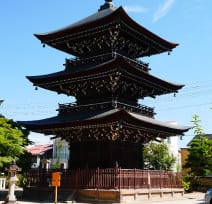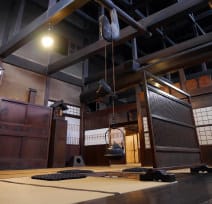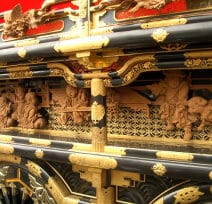- Japanese
- English
- HOME
- Hida Takayama
- About Hida no Takumi
What is a Hida Takumi?
The climate and land of Hida no Kuni nurtures trees and lush mountains.
Hida no Kuni's forests are rich in high-quality, durable timber and many tree species, and the extensive Satoyama forests make it easy to use the wood from the mountains, which led to the birth of woodworking and the improvement of techniques
The origin of the "Hida no Takumi"
During the Nara period, the Taika Reforms established the "Tax, Labor, and Taxation System," which required farmers to pay rice, textiles, and specialty products and to work for a certain period of time. However, the government required Hida no Kuni to dispatch woodworking craftsmen in order to utilize its ancient high-level architectural techniques in the construction of the capital. In return, Hida no Kuni was exempt from the labor and taxation taxes. The skills of the craftsmen who endured the harsh labor and boasted extraordinary skills were praised, and before long they came to be known as the "Hida no Takumi." Later, "Hida no Takumi" became a title of praise to praise master craftsmen.
History and activities of "Hida no Takumi"
About 100 "Hida no Takumi" were conscripted under the Ritsuryo system each year, and by the end of the Heian period, when the system was still in place, a total of 40,000 craftsmen were involved in the construction of palaces, gates, temples, and other structures. They were involved in the construction of many shrines and temples, including Yakushiji Temple, Horyu-ji Yumedono Hall, and Todai-ji Temple, and also played an active role in the construction of Heijo-kyo and Heian-kyo, leading the golden age of Japanese architecture. After further honing their architectural skills by serving in the capital, the "Hida no Takumi" returned to their hometowns after completing their duties, incorporating the new culture of the capital and using their skills to help build their own country.
After the "Hida no Takumi" system was abolished, this technique disappeared from the public eye, but after a period when it was hidden in the form of private homes and furniture, it flourished again in the Edo period when Kanamori Nagachika, who ruled Takayama, modeled the town of Takayama on Kyoto, and when he studied tea ceremony utensils under Sen no Rikyu. In the late Edo period, this technique was put to use in the construction of the magnificent floats for the Takayama Festival. The woodworking, painting, and carving of the floats are all done by Takayama artisans known as "Hida no Takumi."
The long tradition of the "Hida no Takumi" and the techniques cultivated within it are still passed down in this area, both tangible and intangible, to this day.











